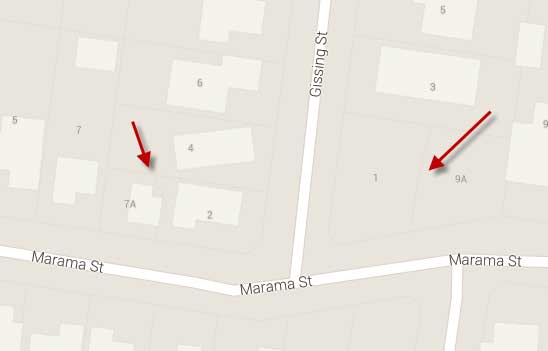Property Developing
A Guide To Property Developing
Are you a budding Bob or Betty the builder? If so then you may be interested in the possibility of making money with property developing.
What Is Property Developing?
In a nutshell, developing real estate involves taking a property as it is now and performing strategic improvements to realise a gain by harnessing a higher and better use of the land and / or building.
Normally a development implies a new use for the land, or new structure (or part structure). That is, taking something in a raw form and improving it.
It is a moot point whether renovating and subdividing fall under the definition of development. We have decided to treat them separately.
When developing real estate, investors often acquire a property with an existing house on it and seek to enhance the use of the house and / or the land the house was built on.
A very common example is what is known as a ‘battle axe’ or ‘dual occupancy’ development where the existing house is retained and one (or more) dwellings are built at the rear. In this situation the house at the front is also usually renovated.
Alternatively, another approach to property developing is to acquire vacant land and develop it by constructing new homes upon it. Perhaps you have heard the term ‘spec home’ or ‘spec builder’? These are developers who build new homes, usually in new land subdivisions, to specification and speculate on selling them for a profit.
Of course the only difference between an existing house and a vacant block of land is the existing house, so another common strategy used by developers is to demolish and rebuild, especially in areas where houses have become obsolete whereas land values have appreciated (such as in subdivisions in metro areas constructed in the 1950’s, 1960’s and 1970’s where such houses are not desired, whereas the land they are built on is).
There is much to learn as a budding property developer, and you are well advised to invest in detailed and structured training from an experienced investor before beginning.
Nonetheless, to help you on your way, here is an analysis of what are know the Five P’s Of Property Developing’.
5 P’s Of Property Developing
#1: Planning
In most jurisdictions, in order to construct a dwelling (or for that matter, to potentially improve it in any way at all) you will need one or more permits. A permit is permission from the appropriate authority to proceed, and will usually only be given if the proposed development is within planning and building guidelines (often called ‘codes’).
As a developer, two permits you will need to become familiar with are:
- Building permit – a permit sought from the appropriate local government authority to construct a new dwelling, or in some instances, substantially improve an existing dwelling.
- Planning permit (also known as a ‘DA’ or ‘development application’) – a permit sought to develop or use land for a particular purpose.
Generally, if you are building anything you will need a building permit. Furthermore, if you are planning to sub-divide or change the use of the land, then you will need to first obtain a planning permit too.
Be aware that permits can take a long time – sometimes many months and maybe even years!
It’s an obvious conclusion then that before contemplating a development you must research the building and planning regulations in the area you plan to develop to make sure you are allowed to do what you plan on doing!
#2: Product
Product refers to the type of dwelling that you plan to build, and to make sure that product is suitable for the parcel of land you are building on, the area, and most importantly of all, for the person you expect will want to buy it.
It is essential that you accurately price the potential product (see below), otherwise any profit you make will be pure speculation and your investing extremely high risk.
In order to price construction you can either obtain a quote from a builder and have them build it for you, or in some jurisdictions you can apply to be an owner-builder and manage the construction yourself.
Be sure to cut the cloth to suit, which means be careful not to over or under capitalise or else you may find it difficult to sell within the price and time budgets you hope for.
You definitely want to spend time browsing spec homes for sale in new housing developments in order to gain an appreciation for modern trends in style, design and pricing.
#3: Person
Before rushing to buy and build, first research who you think will buy the property, why, and for how much.
A potential buyer is known as your ‘target market’, and the more you can find out about your target market’s buying preferences and behaviour, the higher the likelihood you’ll make a profit provided you can meet (and ideally exceed) those expectations in a cost effective manner.
Talking with local real estate agents is a must to gauge what product is popular, for whom, and at what price.
Another good idea for researching what people are buying, and what prices are being paid, is to get hold of comparable sales data and to drive around the suburb looking at the style of property that is in demand and the features included in that housing product.
#4 Price
In many ways you need to start with your end sales price, deduct your building, holding, purchase and sale costs, as well as your desired profit, in order to arrive at your maximum purchase price for the raw product.
Most developers recommend a minimum return on investment of 20%, as that is a sufficient safety margin to fund cost overruns and delays.
#5 Place
Clearly, the location where you develop is very important. You need to choose a location where the product, person and price all align to allow you to make your desired profit.
If you can’t find a location where the numbers work, you need to revise your inputs if possible, and if these are already ‘bare bones’, then seek an alternative location or else choose a different investing strategy.
If your profit is predicated on future price growth then you are speculating, and that adds significant risk to your investing.
Let’s now discuss three specific tips for investors new to developing.
Tip #1 – Deep Pockets
Developing is a cash intensive endeavour.
For instance, construction finance is an unusual product in that if you qualify for a 70% loan, it is the last 70% that a lender usually provides as opposed to 70 cents in each construction dollar. In other words, you need to come up with the first 30% from your own cash reserves.
For instance, if a new home was going to cost you $300,000, you would need to fund the first $90,000 from your own sources, and the lender would fund the final $210,000.
Furthermore, not all expenses will be financed which means you need to pay 100% of such costs.
Then there are the interest costs that, if not capitalised, must be funded from somewhere.
All the while development projects deliver little, if any, income as any pre-sale proceeds are quarantined until after completion.
Many a developer has gone bust mismanaging their cash flow, so beware!
Tip #2 – Be Strategic
If you see a development you like, chances are the plans are lodged with the local council and are therefore on the public record.
For a small fee you should be able to get a copy of the plans and be able to ‘borrow’ ideas and building concepts from them for your own purposes.
This can save you a small fortune in design fees, as well as provide ideas for the size and layout of homes
Tip #3 – Google Maps
Google maps has a very handy feature that allows you to see the land boundaries. While there is no guarantees they are exact, they are still a good starting point to see what previous sub-divisions have been approved, and what are the street addresses to enquire about with the local council if you would like a copy of the plans below.
Consider this screenshot:
It seems 7A Marama Street is a sub-division of the original land parcel at number 2 Gissing Street. Furthermore, 9A Marama Street appears to be a sub-division of number 1 Gissing Street. Clearly this area has potential development approval.
Property Developing Summary
There’s no doubt about it… developing has made many investors large sums of money. Of course, many others have also lost a fortune by being on the wrong end of a speculative development deal gone bad.
Armed with appropriate education, a large dose of common sense, and a conservative mindset (rather than being greedy), many of the risks often blindly accepted by those who don’t know better can be mitigated or managed to acceptable levels.
Trackbacks
Got something to say? Post a comment...
You must be logged in to post a comment.







[…] than actual cost, and then sell it for a profit. This might be achieved through a subdivision, development, or […]